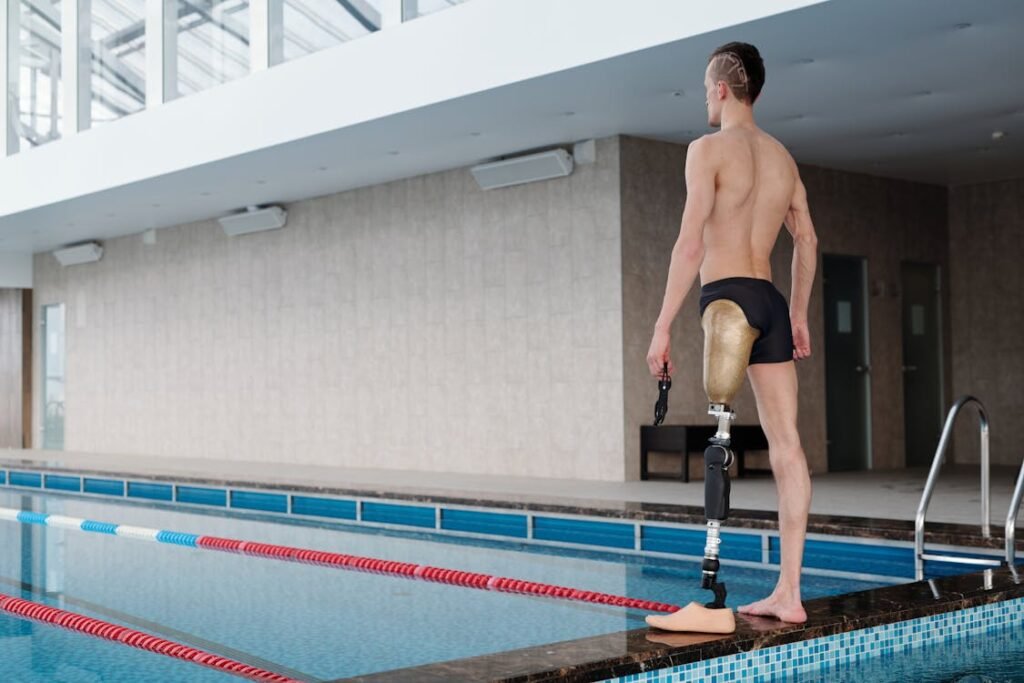Prosthetic technology is advancing at an incredible pace, giving people with limb loss more comfort, control, and freedom than ever before. While prosthetics for full limb loss get a lot of attention, there is also exciting progress in solutions for partial foot amputations and hemipelvectomy patients. These conditions require specialized prosthetic designs that restore movement, balance, and confidence.
Today, cutting-edge materials, robotics, and AI-driven technologies are revolutionizing how these prosthetics work. The goal is simple: to make them feel as natural as possible. This means lightweight designs, better fit, improved stability, and smarter control systems.
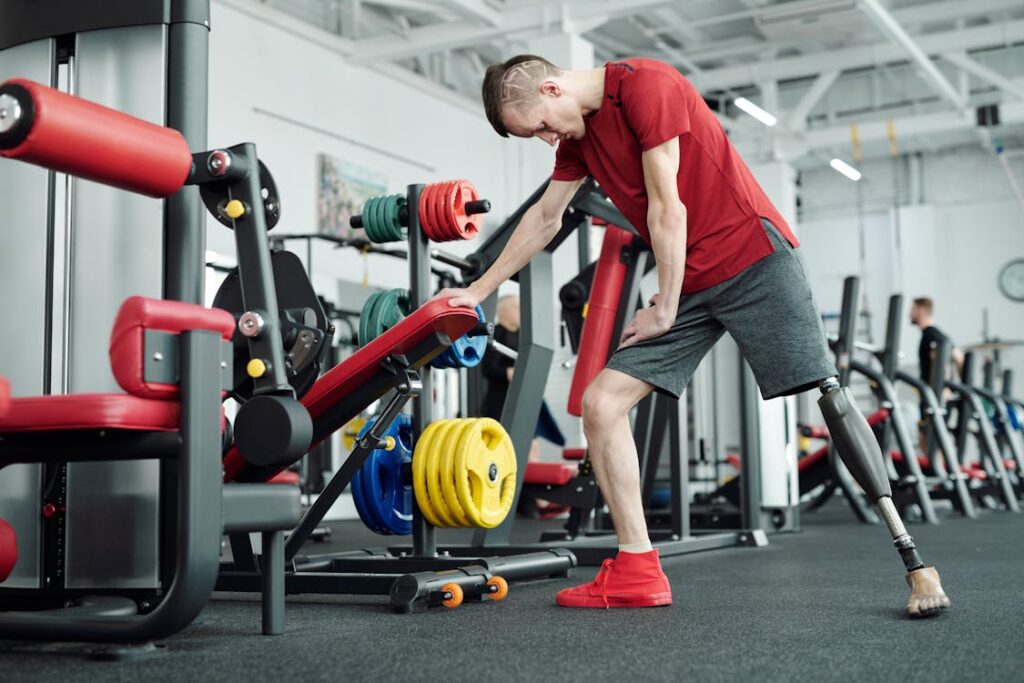
Advances in Partial Foot Prosthetic Technology
Partial foot prosthetics have come a long way from simple fillers and rigid footplates. Today, they are designed to restore natural movement, improve gait, and reduce strain on the rest of the body.
The goal is to provide a seamless walking experience that allows users to move with confidence and comfort.
The Shift Towards Lightweight and Flexible Materials
Traditionally, partial foot prosthetics were made from hard, unyielding materials that felt unnatural when walking. While they provided some level of support, they often caused discomfort and did not allow for a full range of motion.
Modern prosthetic design has changed that. Advances in carbon fiber and flexible polymers have allowed for lightweight, high-strength solutions that mimic the foot’s natural movement.
These materials absorb impact better, making each step feel more fluid and reducing strain on the knee and hip.
Silicone-based prosthetics are also gaining popularity because they provide a more natural look and feel.
These prosthetics integrate seamlessly with the remaining foot, offering better suspension and reducing friction-related discomfort. By using custom-molded designs, they create a snug fit that enhances stability and comfort.
Enhancing Biomechanics with Dynamic Footplates
One of the biggest breakthroughs in partial foot prosthetics is the development of dynamic footplates. These footplates are designed to store and return energy with each step, helping the user walk more efficiently.
Unlike rigid designs that limit movement, dynamic footplates flex naturally, allowing for a smoother transition from heel to toe. This technology makes a significant difference for people who are active, as it enables them to walk longer distances with less fatigue.
Advanced footplate technology also plays a critical role in balance. Many partial foot amputees struggle with uneven weight distribution, which can lead to back pain and joint issues over time.
By creating a more even weight shift, dynamic footplates help reduce the risk of long-term complications.
Some newer models are even equipped with microprocessor-controlled adjustments, which help fine-tune movement for better stability on different surfaces.
The Role of 3D Printing in Custom Prosthetic Solutions
Customization has always been a challenge in prosthetic manufacturing, but 3D printing is changing the game.
With 3D scanning and printing, prosthetists can create highly personalized partial foot prosthetics that fit the unique shape and needs of each user. This not only improves comfort but also enhances functionality.
Another advantage of 3D printing is cost efficiency. Traditional prosthetic manufacturing can be expensive and time-consuming, but 3D printing streamlines the process.
Patients can receive their prosthetic in a shorter time frame, and adjustments can be made with greater precision. Additionally, 3D-printed materials are becoming stronger and more durable, ensuring long-lasting solutions.
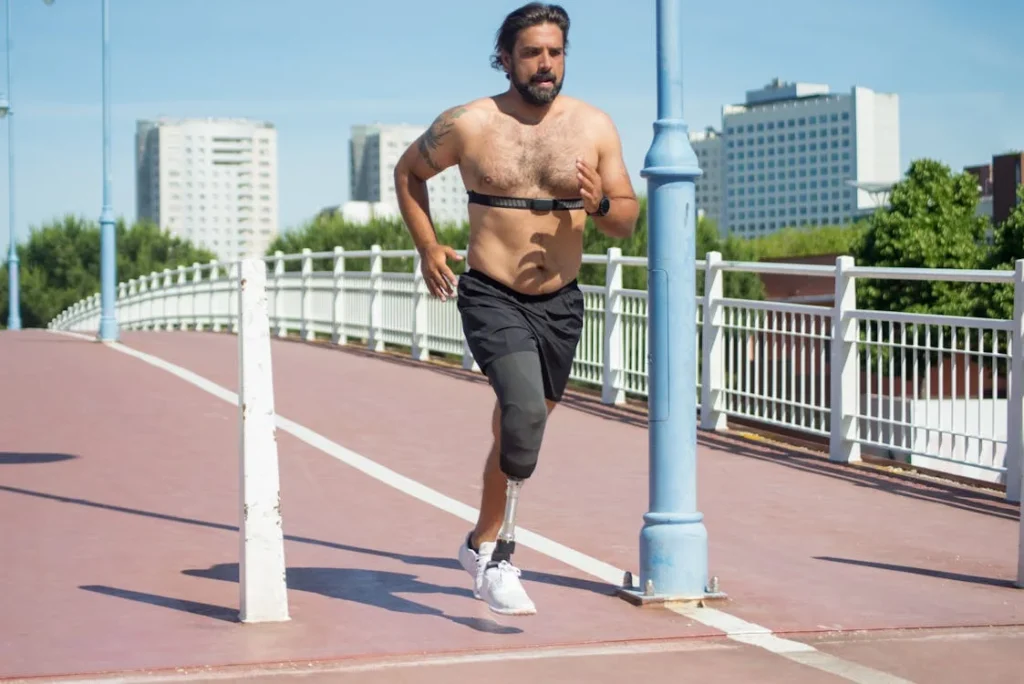
Innovations in Hemipelvectomy Prosthetic Technology
Hemipelvectomy is one of the most complex types of amputations, requiring highly specialized prosthetic solutions.
Unlike below-the-knee or above-the-knee amputations, hemipelvectomy removes not just the leg but also part of the pelvis, making balance and mobility more challenging.
In the past, prosthetic options for hemipelvectomy patients were bulky, uncomfortable, and often difficult to use for long periods.
However, modern advancements are transforming these prosthetics into lightweight, functional, and more natural-feeling solutions.
The Evolution of Suspension and Weight Distribution
One of the biggest challenges in hemipelvectomy prosthetics is ensuring that the device stays securely in place without causing discomfort.
Traditional prosthetics relied on rigid belts and straps, which could be cumbersome and lead to skin irritation.
Today, advanced suspension systems, including vacuum-assisted designs, have made a significant difference.
These systems create a secure fit by using negative pressure, ensuring the prosthetic stays in place without excessive force on the skin.
Weight distribution is another key factor. Older prosthetics often felt unbalanced, forcing users to adjust their walking patterns unnaturally.
Modern designs incorporate biomechanical research to distribute weight more evenly, reducing strain on the lower back and hips.
By mimicking the natural alignment of the body, these prosthetics help prevent long-term musculoskeletal issues, making walking feel more natural.
Smart Prosthetics and AI-Driven Adaptability
Technology is making prosthetics smarter, and hemipelvectomy patients are benefiting from AI-driven innovations.
Advanced prosthetics now include microprocessors that analyze movement in real-time, adjusting to the user’s walking style and terrain.
These intelligent systems provide smoother transitions between steps, reducing the effort needed to walk on slopes, stairs, or uneven surfaces.
Some prosthetics are even integrating machine learning algorithms that adapt over time. By collecting data on movement patterns, these devices can optimize performance, making adjustments that improve stability and reduce the risk of falls.
This is particularly important for hemipelvectomy patients, who require additional balance support due to the loss of a large portion of their lower body.
Lightweight Materials and Improved Comfort
Material science is playing a huge role in enhancing prosthetic technology. Early hemipelvectomy prosthetics were made from heavy metals and rigid plastics, making them uncomfortable for extended wear.
Today, carbon fiber, titanium, and high-strength polymers provide durability without the added weight. These materials allow users to wear their prosthetics for longer periods without experiencing fatigue or discomfort.
Comfort is further improved with better socket designs. Traditional sockets often created pressure points, leading to skin breakdown and discomfort.
Newer designs use gel liners and soft materials that reduce friction and distribute pressure evenly. This ensures that users can move naturally without constant irritation.
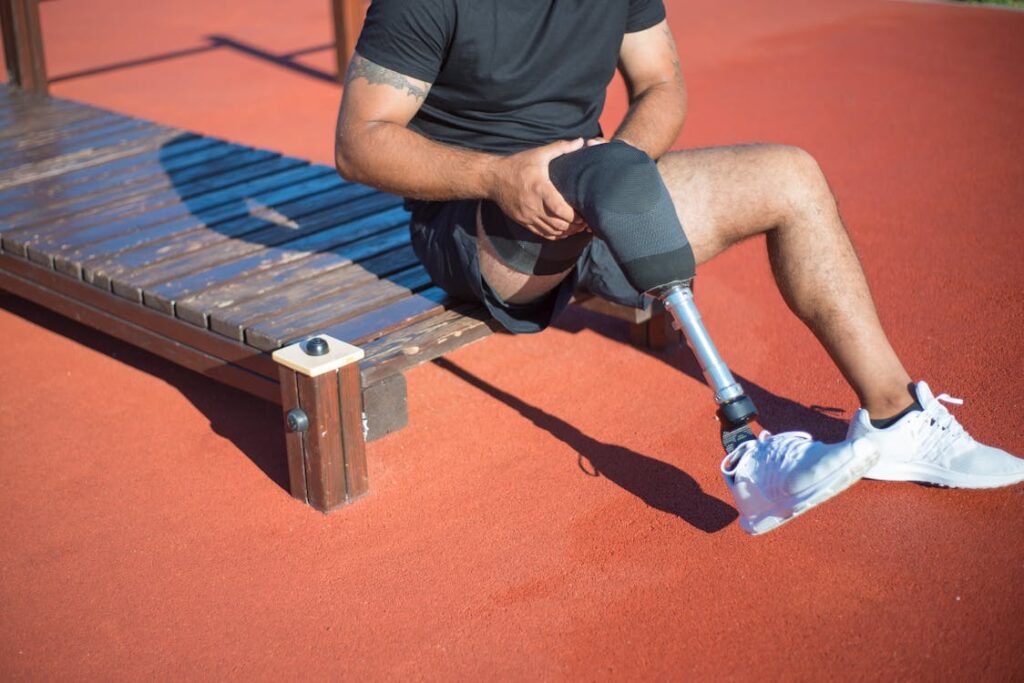
The Role of Robotics and Bionics in Future Prosthetic Design
Prosthetic technology is moving beyond passive mechanical designs and into the world of robotics and bionics. These advanced systems aim to restore not just mobility but also a sense of natural movement and even sensation.
While bionic technology has primarily been focused on hand and arm prosthetics, there are significant advancements in lower-limb solutions, including partial foot and hemipelvectomy prosthetics.
Restoring Natural Motion with Powered Prosthetics
One of the most promising innovations in prosthetic technology is the development of powered prosthetics.
Unlike traditional prosthetic legs that rely on the user’s strength and momentum, powered prosthetics use electric motors and sensors to replicate muscle function.
These devices can actively assist with movement, making walking, running, and climbing stairs feel more natural.
For hemipelvectomy patients, powered prosthetics are especially valuable. Since they lack a full hip joint, traditional prosthetics require a great deal of upper body strength to operate.
With powered joints, the prosthetic can generate movement on its own, reducing the effort needed from the user. This not only makes walking easier but also significantly reduces fatigue and strain on the rest of the body.
Partial foot prosthetics are also benefiting from this technology. Advanced designs now feature microprocessor-controlled ankle joints that adjust to the walking surface, improving balance and reducing the risk of tripping.
These devices use real-time feedback to adapt to different terrains, ensuring smoother and safer movement.
Sensory Feedback and the Future of Prosthetic Touch
A major limitation of traditional prosthetics is the lack of sensory feedback. When someone loses a limb, they also lose the ability to feel the ground beneath them, which affects balance and coordination.
Researchers are now working on prosthetics that restore a sense of touch through sensory feedback systems.
By using electrodes that connect to the nervous system, these prosthetics can send signals to the brain, allowing users to “feel” pressure, texture, and temperature.
For partial foot prosthetic users, this means greater awareness of their steps, improving their ability to walk on uneven surfaces. Hemipelvectomy patients, who rely heavily on their prosthetics for stability, can benefit from a more intuitive sense of movement.
Although this technology is still in its early stages, the potential impact is enormous. Sensory feedback could revolutionize how prosthetic users interact with their environment, making movement more instinctive and reducing the risk of falls.
Customization and Personalization Through AI and Machine Learning
No two people walk the same way, and no two amputations are identical. This is why customization is a key focus in modern prosthetic development.
Artificial intelligence and machine learning are being integrated into prosthetics to create devices that adapt to the unique needs of each user.
AI-powered prosthetics analyze walking patterns and automatically make adjustments to improve efficiency. Over time, these devices learn from the user’s movements, fine-tuning themselves to provide better support.
This level of personalization ensures a more comfortable and natural walking experience.
Additionally, 3D scanning and printing technologies allow for highly customized prosthetic designs. By creating an exact model of the user’s residual limb, prosthetists can produce a perfect fit that minimizes discomfort and maximizes functionality.
This approach ensures that both partial foot and hemipelvectomy patients receive prosthetics that feel like a natural extension of their body.
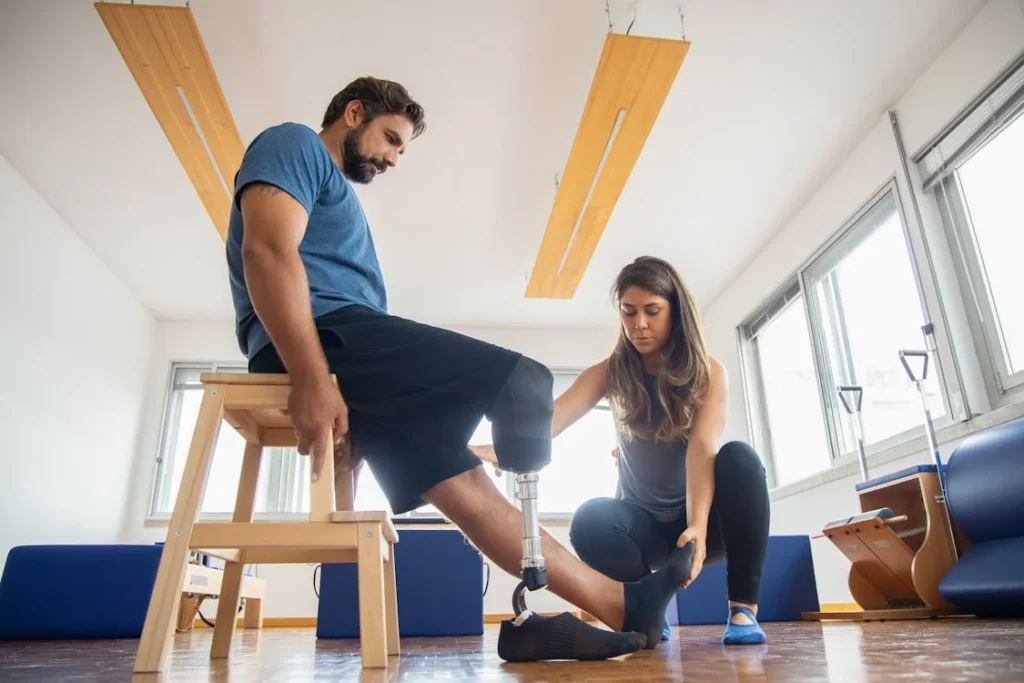
The Future of Rehabilitation and Adaptation for Prosthetic Users
Technology is only part of the equation when it comes to improving prosthetic outcomes. Even the most advanced prosthetics require users to undergo proper rehabilitation and training to fully integrate them into daily life.
The future of prosthetic adaptation is being shaped by innovative rehabilitation techniques, gamified therapy, and virtual reality training, ensuring that users can regain confidence and independence faster than ever before.
Gamified Rehabilitation for Faster Adaptation
Traditional rehabilitation for prosthetic users has often been repetitive and physically demanding, making it difficult for patients to stay engaged. Gamification is changing that by turning rehabilitation exercises into interactive challenges.
By incorporating game-like elements into therapy, users are more likely to stay motivated and committed to their training.
For partial foot prosthetic users, gamified rehabilitation may include balance-based games that encourage stability and proper weight distribution.
These games help retrain the brain to recognize the prosthetic as a natural part of the body. Hemipelvectomy patients, who face more complex mobility challenges, can benefit from strength-based challenges that improve core stability and coordination.
With advancements in motion tracking and AI-driven feedback, rehabilitation programs can now provide real-time corrections. If a user’s gait is off balance, the system can detect the issue and suggest adjustments.
This ensures that the learning process is more precise, reducing the risk of long-term strain or injury caused by improper movement.
Virtual Reality and AI-Assisted Prosthetic Training
One of the biggest hurdles for new prosthetic users is overcoming the fear of falling or moving incorrectly. Virtual reality (VR) is emerging as a powerful tool in prosthetic training, allowing users to practice walking, climbing stairs, and navigating obstacles in a safe, controlled environment.
For hemipelvectomy patients, VR can simulate different terrains and real-life scenarios, helping them adjust to the unique challenges they will face outside of a clinical setting.
The ability to practice in a virtual world before stepping into the real one builds confidence and reduces anxiety.
AI-assisted training programs further enhance rehabilitation by analyzing movement patterns and providing personalized feedback. These systems track progress over time and adjust the difficulty of exercises based on the user’s improvement.
By creating a tailored rehabilitation experience, users can adapt to their prosthetics more effectively, ultimately achieving greater mobility and independence.
The Shift Towards Home-Based Rehabilitation
Many prosthetic users struggle to access regular in-person rehabilitation due to location or financial constraints. The future of prosthetic rehabilitation is shifting towards home-based solutions, allowing users to complete their training remotely while still receiving professional guidance.
Wearable sensors and smartphone apps are making it possible for users to track their rehabilitation progress at home. These tools provide step-by-step instructions, monitor gait patterns, and even connect users with remote therapists for virtual sessions.
This approach ensures that rehabilitation remains consistent, even when in-person visits aren’t possible.
For partial foot and hemipelvectomy patients, home-based rehabilitation offers greater flexibility and accessibility. By integrating technology-driven therapy into everyday life, users can gradually improve their mobility without feeling overwhelmed.
This personalized approach makes the transition to prosthetic use smoother and more intuitive.

The Impact of Prosthetic Advancements on Quality of Life
Prosthetic technology is not just about restoring movement—it’s about transforming lives.
The latest innovations in partial foot and hemipelvectomy prosthetics are allowing users to regain independence, participate in activities they love, and live without constant discomfort.
With improvements in comfort, functionality, and adaptability, the future looks promising for individuals who rely on prosthetics for mobility.
Restoring Confidence and Mobility
One of the biggest challenges amputees face is the psychological impact of limb loss. Beyond the physical adjustments, many struggle with self-confidence, fear of social stigma, or uncertainty about how they will navigate everyday tasks.
Modern prosthetic solutions are addressing these concerns by providing more natural, intuitive movement that allows users to feel more like themselves again.
For partial foot amputees, newer prosthetic designs enable smoother walking patterns, reducing the awkward gait that can sometimes draw unwanted attention. With enhanced footplate technology and improved weight distribution, users can walk more confidently without constantly worrying about balance. For hemipelvectomy patients, powered prosthetics and AI-driven adjustments make it easier to move naturally, allowing them to focus on their daily lives instead of the mechanics of walking.
As prosthetic designs become more lightweight and ergonomic, users also experience less fatigue. This means they can engage in more activities without discomfort, whether it’s walking longer distances, playing sports, or simply standing for extended periods.
The ability to move freely without pain or exhaustion significantly improves overall well-being.
Expanding Opportunities for Work and Recreation
Prosthetic advancements are opening new doors in both professional and recreational activities. Many amputees worry about whether they will be able to return to their previous jobs or if their mobility limitations will affect their career opportunities.
With the rise of high-performance prosthetics, individuals can work in physically demanding fields, including construction, athletics, and even military service.
For those who enjoy sports and outdoor activities, the latest prosthetic technology is making it easier than ever to stay active.
Carbon fiber running blades, water-resistant prosthetics for swimming, and adaptive prostheses for cycling or hiking allow users to participate in activities that once seemed out of reach.
This shift not only promotes physical health but also helps users build confidence and reconnect with their passions.
Improving Long-Term Health Outcomes
Beyond mobility and lifestyle improvements, the latest prosthetic designs are helping users maintain better overall health.
Poorly fitted or outdated prosthetics often lead to secondary complications, including joint pain, spinal misalignment, and muscle strain. With more customized and ergonomic designs, users can avoid these long-term health issues.
For hemipelvectomy patients, who often experience imbalances due to the significant loss of body mass, modern prosthetics help maintain proper posture and reduce pressure on the lower back.
This significantly lowers the risk of chronic pain and other musculoskeletal conditions that commonly develop over time.
Additionally, as prosthetic control systems become smarter, they allow users to move with less exertion. This is particularly important for older individuals or those with other health conditions, as it reduces overall physical strain and conserves energy.
By minimizing stress on the body, modern prosthetics contribute to greater longevity and better quality of life.
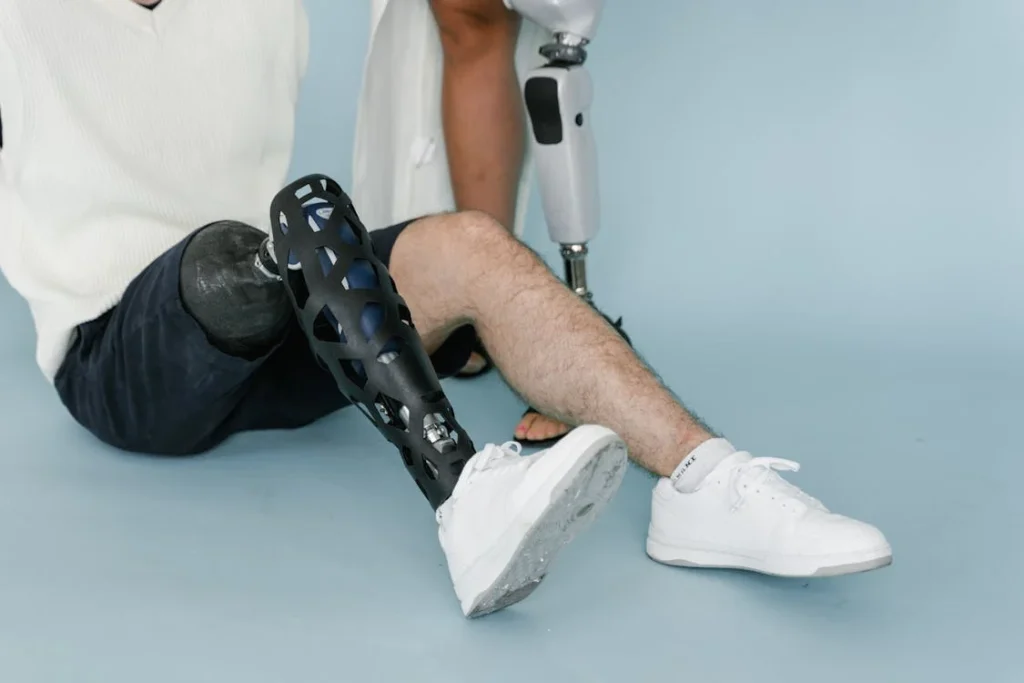
The Future of Accessibility and Affordability in Prosthetic Technology
While technological advancements in prosthetics are exciting, their true impact depends on accessibility. Historically, high-quality prosthetics have been expensive and difficult to obtain, limiting the number of people who can benefit from them.
However, recent innovations in manufacturing, insurance coverage, and government initiatives are making prosthetics more affordable and widely available.
The Rise of Affordable 3D-Printed Prosthetics
One of the biggest breakthroughs in prosthetic accessibility is 3D printing. Traditional prosthetic manufacturing is expensive, requiring custom molds and specialized production techniques that drive up costs.
3D printing is changing this by allowing prosthetists to create highly customized devices at a fraction of the price.
For partial foot prosthetics, 3D printing enables rapid production of personalized footplates and covers, ensuring a perfect fit without the need for lengthy adjustments.
Hemipelvectomy prosthetics, which traditionally require complex socket designs, are also benefiting from this technology.
With digital scanning, prosthetists can quickly design and print a prosthetic that conforms precisely to the patient’s residual limb, improving both comfort and function.
Beyond affordability, 3D printing also reduces wait times. Instead of waiting weeks or months for a prosthetic to be manufactured, patients can receive their device in days.
This faster turnaround allows for quicker rehabilitation and adaptation, helping users regain mobility sooner.
Expanding Insurance Coverage and Government Support
Cost has always been a major barrier to prosthetic access, but changes in insurance policies and government programs are making a difference.
Many countries are beginning to recognize the long-term benefits of providing high-quality prosthetics, leading to expanded coverage options.
In India, initiatives under the “Make in India” movement are encouraging local production of prosthetics, reducing dependency on expensive imports.
Companies like Robobionics are at the forefront of this shift, providing cost-effective, high-quality prosthetic solutions tailored to the needs of Indian users. By manufacturing prosthetics locally, Robobionics ensures faster service, lower costs, and better accessibility for users across the country.
Government programs are also playing a role in funding prosthetic care for underprivileged communities. Many nonprofit organizations are partnering with prosthetic manufacturers to provide free or subsidized devices to those in need.
This growing support system is helping more individuals regain mobility and independence, regardless of their financial situation.
Bringing Prosthetic Care to Rural and Remote Areas
Accessibility is not just about affordability—it’s also about availability. Many people living in rural or remote areas struggle to access proper prosthetic care due to the lack of specialized clinics.
The future of prosthetic technology includes solutions that bridge this gap, ensuring that individuals in all regions receive the support they need.
Telehealth services are making it easier for prosthetists to assess patients remotely. Through video consultations and digital scans, experts can provide guidance on prosthetic fitting and adjustments without requiring patients to travel long distances.
Mobile prosthetic clinics are also becoming more common, bringing essential services directly to those who need them.
Additionally, local training programs are empowering more professionals to become prosthetists, increasing the number of skilled practitioners available in underserved areas.
By building a stronger support network, more individuals can receive high-quality prosthetic care, no matter where they live.
Conclusion
The future of partial foot and hemipelvectomy prosthetic technology is brighter than ever. Innovations in materials, robotics, AI, and 3D printing are making prosthetics more comfortable, functional, and accessible. These advancements are not just restoring mobility but transforming lives by improving confidence, reducing fatigue, and enabling users to participate fully in work, sports, and everyday activities.
As technology evolves, affordability and accessibility remain key priorities. Companies like Robobionics are leading the way in providing high-quality, cost-effective prosthetic solutions tailored to real-world needs. With government support, insurance improvements, and new manufacturing techniques, more individuals can benefit from cutting-edge prosthetic care.
Beyond technology, advancements in rehabilitation and training are ensuring that prosthetic users can adapt more quickly and regain independence with confidence. The integration of gamified therapy, AI-driven feedback, and virtual reality is reshaping how users interact with their prosthetics, making the adaptation process smoother and more intuitive.
The journey towards better prosthetics is ongoing, but one thing is clear: the future holds incredible possibilities for those living with limb loss. With continuous innovation and greater accessibility, prosthetics will become even more natural, empowering individuals to move freely and live life without limitations.



